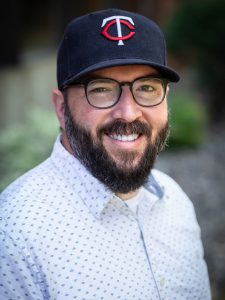 By Nicholas Tangen
By Nicholas Tangen
Two Sundays ago, I preached at Our Saviour’s Lutheran Church in East Bethel, one of the congregations participating in the Faith Practices & Neighboring Practices learning community. I’ve really enjoyed visiting the congregations in our Synod, and I’m always honored when I am invited to preach. This time, I was doubly honored, because I was also invited to do a children’s sermon.
I don’t know about you, but I always find children’s sermons to be a little risky. There just seems to be so many more variables at play. And, you’re never only preaching to the kiddos; those adults are always listening in.
But this past Sunday I took the opportunity to have the kids of the congregation model a practice and posture for community building that, in my most humble opinion, is accessible and meaningful for all ages: Discovering the gifts and strengths of our neighbors.
FOR CHURCHES FEELING a call to connect with the neighborhood and community where they gather for worship, there can be a tendency to begin that connection through a lens of need. When we talk about our neighbors and our neighborhoods, we often focus on what’s wrong and where people are hurting. But this creates a story that our neighborhoods are fundamentally deficient, which disregards the amazing gifts, strengths, and assets present in our community.
In his book Having Nothing, Possessing Everything: Finding Abundant Communities in Unexpected Places, Pastor Michael Mather says: “What makes communities healthier, stronger, and better? Growing the gifts of people who care about their neighbors, who visit each other when they’re sick and offer healing, who throw good parties to celebrate life and joy, who are talented carpenters, cooks, gardeners, administrators, organizers, and artists.”
Imagine if instead of seeing our churches as providers of services in our communities, we saw ourselves as conveners and animators of community gifts and strengths. If instead of problem solving, we focused our attention on building and supporting the capacities of our neighbors to do what they love to do and what contributes to the common good?
This imagination can begin with some very simple questions:
- “What is something you know how to do well enough that you could teach someone else?”
- “What is something you’ve always wanted to learn more about?”
From these two simple questions we can begin to discover what makes our neighbors come alive, and where we can connect them with other neighbors who have gifts to share.
So, these were the two questions I asked the kids at Our Saviour’s during the children’s sermon. And these kids named some incredible gifts!
- “I can teach someone how to do origami.”
- “I could teach someone how to draw.”
- “I could show someone how to do self-defense.”
- “I know how to paint!”
Then I sent a couple of them out into the congregation, armed with this question about gifts, and asked them to see what they could find among the adults. And, not surprisingly, we learned that were several incredible gifts present in the pews. All it took was someone to ask.
THIS CHILDREN’S SERMON reminded me that all the fear and anxiety we have about connecting with our neighbors is significantly overblown. It takes a little curiosity, an eye for seeing gifts more than needs, and the courage to talk to someone you don’t know. And these are qualities I think our kids have more experience with and less anxiety about than adults. Maybe this is part of what Jesus meant when he called on each of us to “become like children” (Matthew 18:3).
In a community, when we know and are always on the look out for our neighbors’ gifts and strengths, we will be endlessly surprised at our capacity for creativity and the common good. When we bring those people and those gifts together and ask ourselves, “what do we want to create together?,” we may discover that the stories about our deficiency and our neighborhoods as networks of needs have been greatly exaggerated. Instead, we may see that God has been up to something in our community all along, and is inviting us to take part.
So, my friends, what is something you know how to do well enough that you could teach someone else? What is something you’ve always wanted to learn? What do you think we can create together with God’s help? Let’s see what God is up to.

